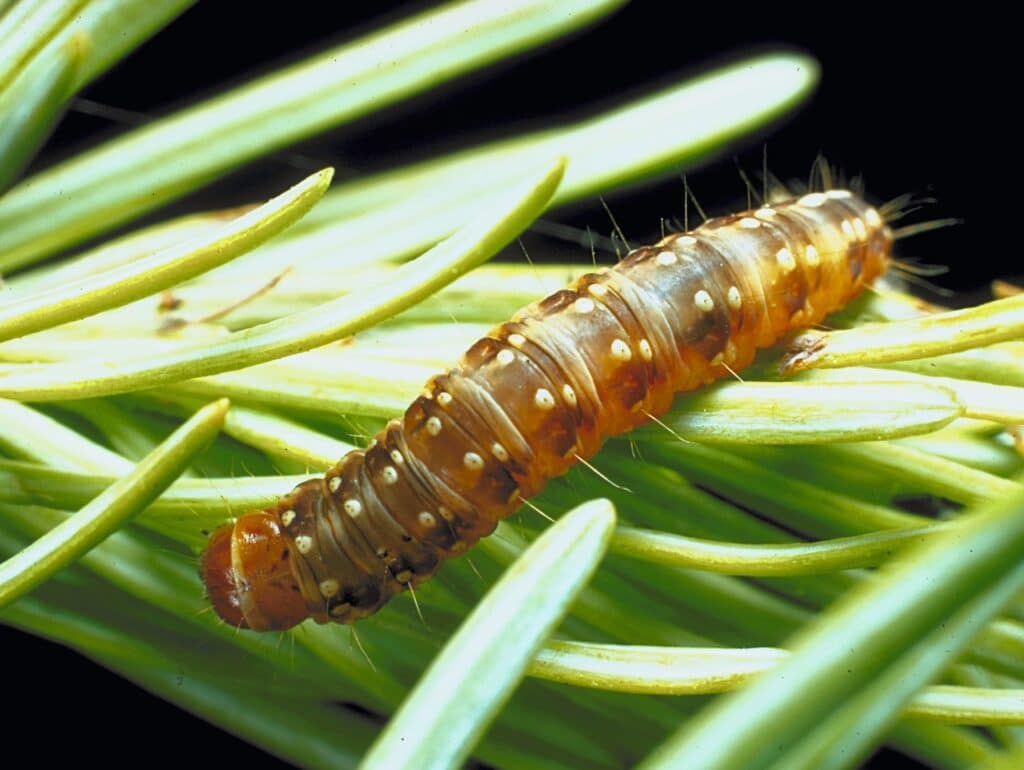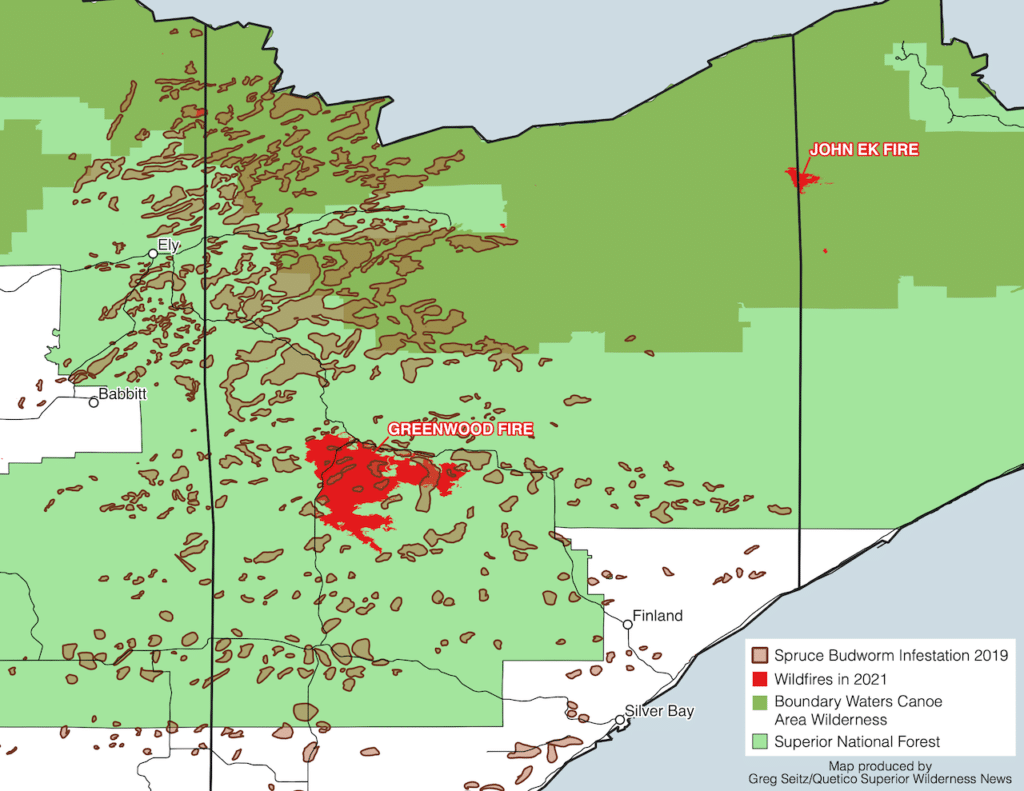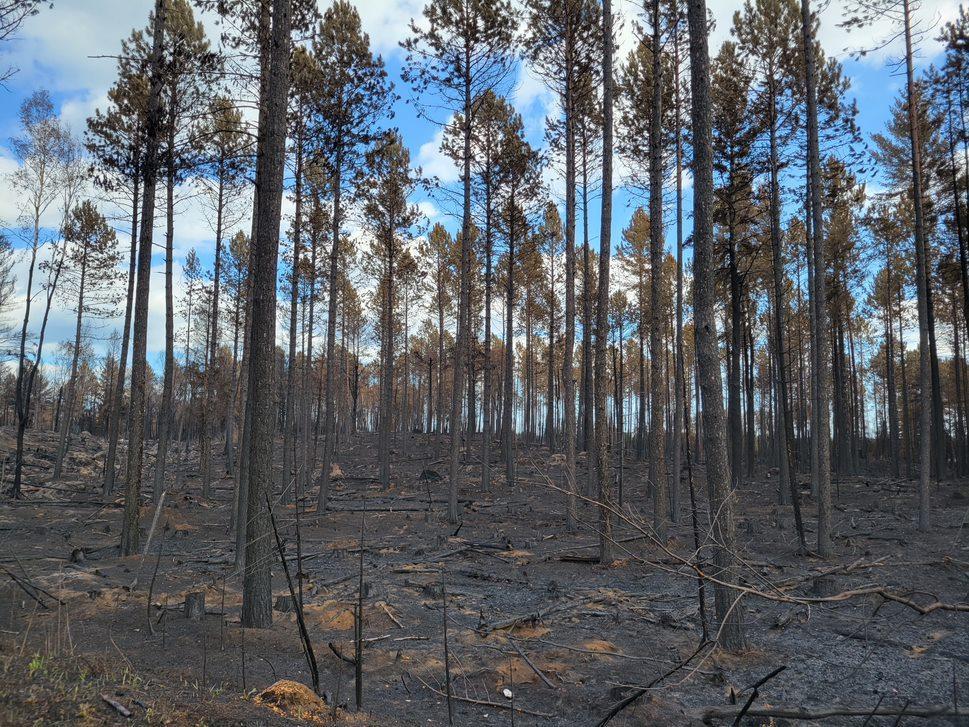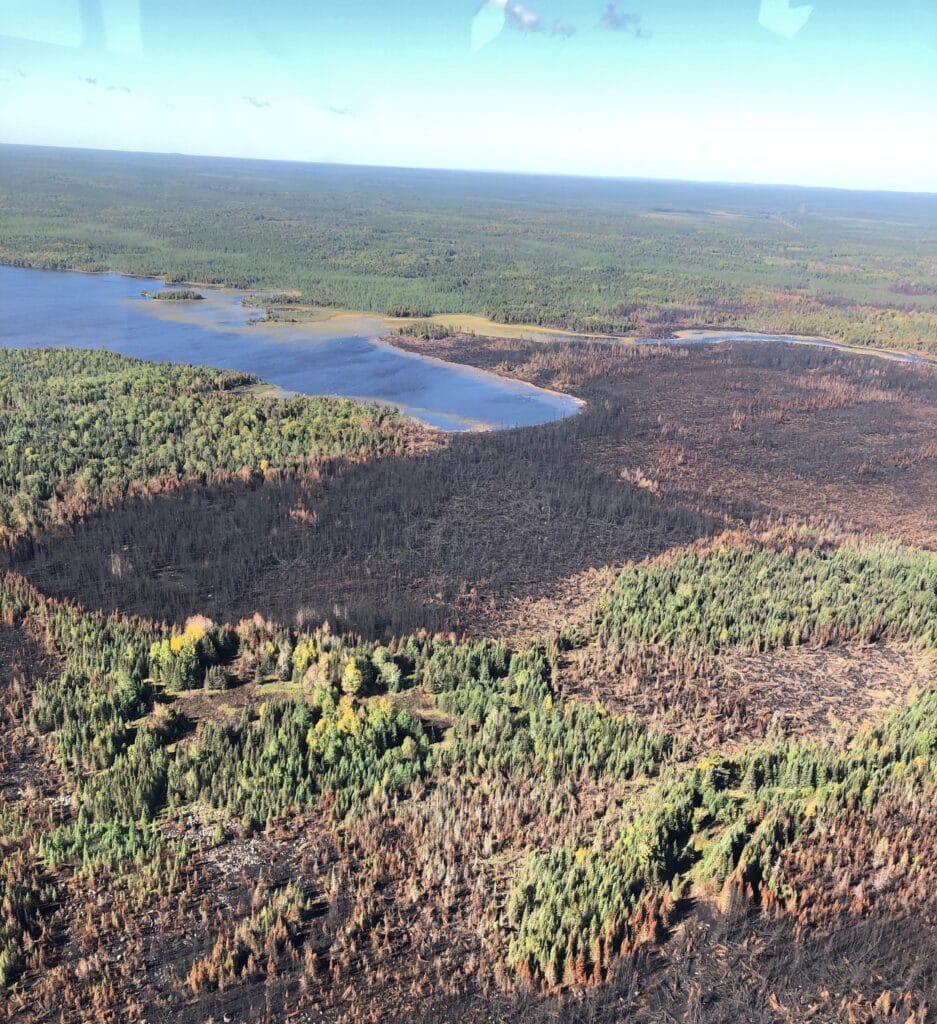
In the aftermath of this summer’s large and out-of-control wildfires in northeastern Minnesota, the role of a voracious little caterpillar is looming large. Spruce budworms are native to the region, but their populations have grown exponentially in recent years, and by killing conifers, they may have created a ‘tinderbox’.
The area where the year’s biggest and most destructive fire, the Greenwood Fire, near Isabella, is in the heart of the current spruce budworm outbreak. The insects wax and wane every 30 to 40 years, and are nearing their peak in a swath centered on Lake County. As larvae, spruce budworm moths feast on the needles of spruce and balsam fir, with the firs their favorites by far. In huge numbers, they can kill the conifers, leaving thick stands of dead trees which burn ferociously.

Spruce budworms come and go, and so do the spruce-balsam forests where they thrive. The rise and fall of the insects is connected to the age and density of the trees, and fire has long factored in, too. Foresters have found that local infestations usually last for about eight years, which is as long as a balsam fir can live once it’s been attacked by spruce budworms.
While the bugs and their cycles are a natural part of the forest, the sheer amount of dense balsam fir stands is not. The destructive caterpillars are part of a problem caused by decades of fire suppression.
KSTP reports that the DNR’s annual forest health survey published in 2019 had identified the area where the Greenwood Fire burned as particularly prone to such a blaze.
“Also similar to last year, the heaviest spruce budworm landscape-level impact was in an area southeast of Ely that is mostly Superior National Forest land,” the DNR wrote. “The outbreak in this area will most likely be active until 2021. Newly impacted areas are occurring in eastern Lake County and gradually into Cook County.”
The agency also reported 201,000 acres of forest affected by the insects, which was about double the average of the past two decades.
Combined with this summer’s severe drought, the fires found a lot of fuel. The Greenwood Fire ultimately burned about 27,000 acres and destroyed dozens of buildings, including homes and cabins. Spruce budworms are not the only culprit, as climate and forest management also factor in. But the budworm outbreak created a tinderbox.
“I would say budworm defoliation and mortality most likely contributed to increasing the risk of fire in the area of where the Greenwood Fire occurred,” DNR forest health specialist Eric Otto recently told KSTP.
The boreal forest naturally burns at regular intervals, clearing the thick stands and making room for fresh growth. It’s part of the forest succession that creates the mosaic of forest types and ages that existed in the region before European settlement and fire suppression.


In the absence of fire, manually removing trees and planting other species is the only option. In the past several years, Lake County has prioritized the effort, including providing $1.9 million in federal grants to private landowners.
“In addition to the fire hazard and reduced forest productivity, there is no value in dead or declining balsam fir, and a very limited market for balsam fir in general,” said Tim Byrns, a Lake Soil & Water Conservation District forester based in Two Harbors. “So cutting and treating the woody residue on site is often the only management option.”
With climate change expected to cause more severe droughts like the one seen this summer, the fire risks only rise. When the trees are killed by spruce budworm and dried by hot weather, they provide dry wood that also helps fires grow into infernos. Balsam fir retain lower branches and occupy a mid-height in forests. When they burn, they easily ignite taller trees like red and white pines.
The Minnesota Board of Water and Soil Resources reports that the Lake County efforts have resulted in more than 1,500 acres treated to reduce fire risk, while KSTP reports the Forest Service has treated about 3,000 acres, and the DNR cleared about 500 acres, in the Greenwood Fire area over the past several years.
More information
- How a caterpillar helped fuel Minnesota’s most destructive forest fire in years – KSTP
- From tree-killing infestation arises hope for diverse North Shore forest – Minnesota Board of Water and Soil Resources
- Eastern spruce budworm – University of Minnesota Extension
- Spruce budworm likely to impact Cook County trees in coming years – WTIP
- Eastern Spruce Budworm – MN DNR

